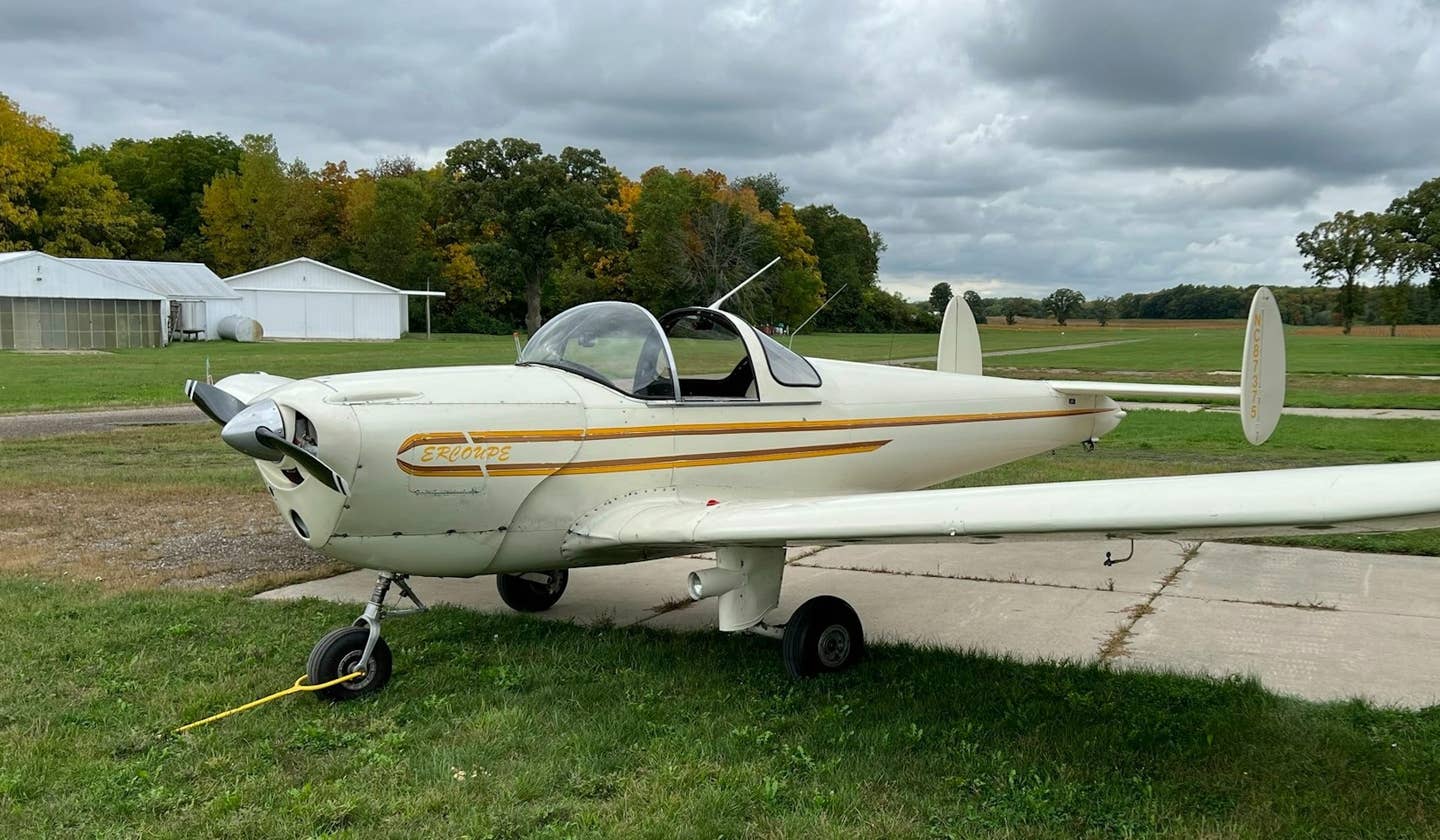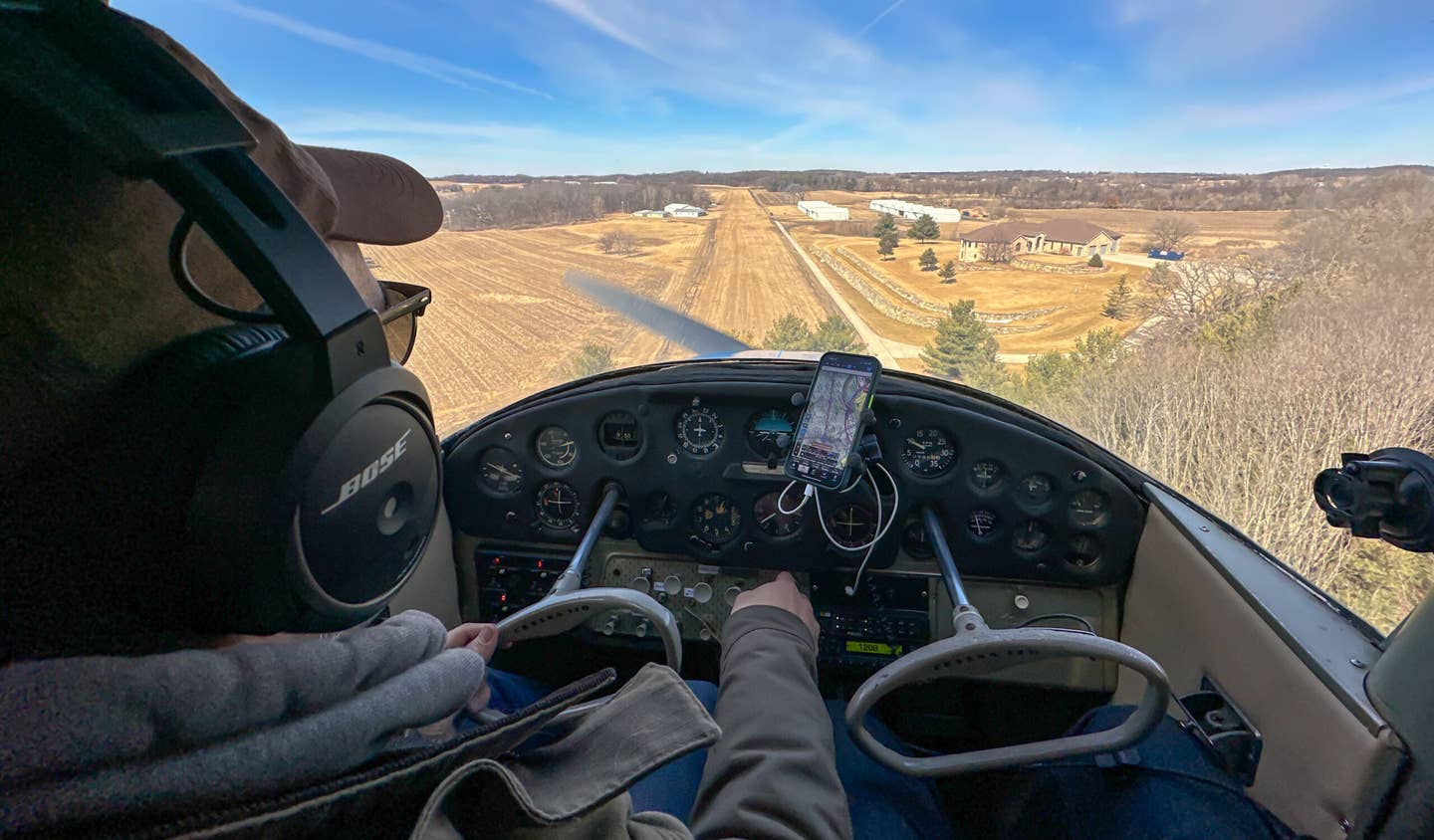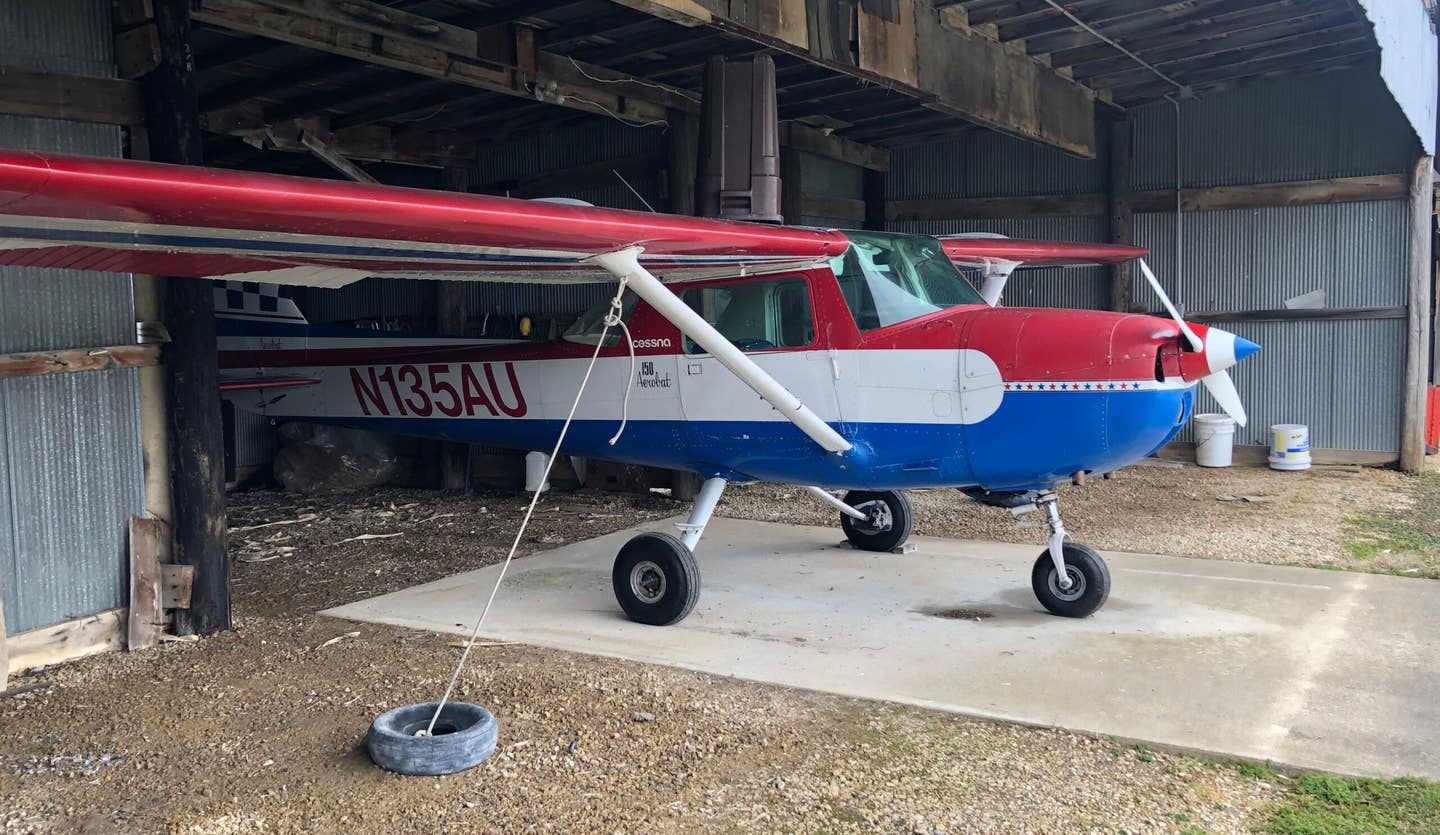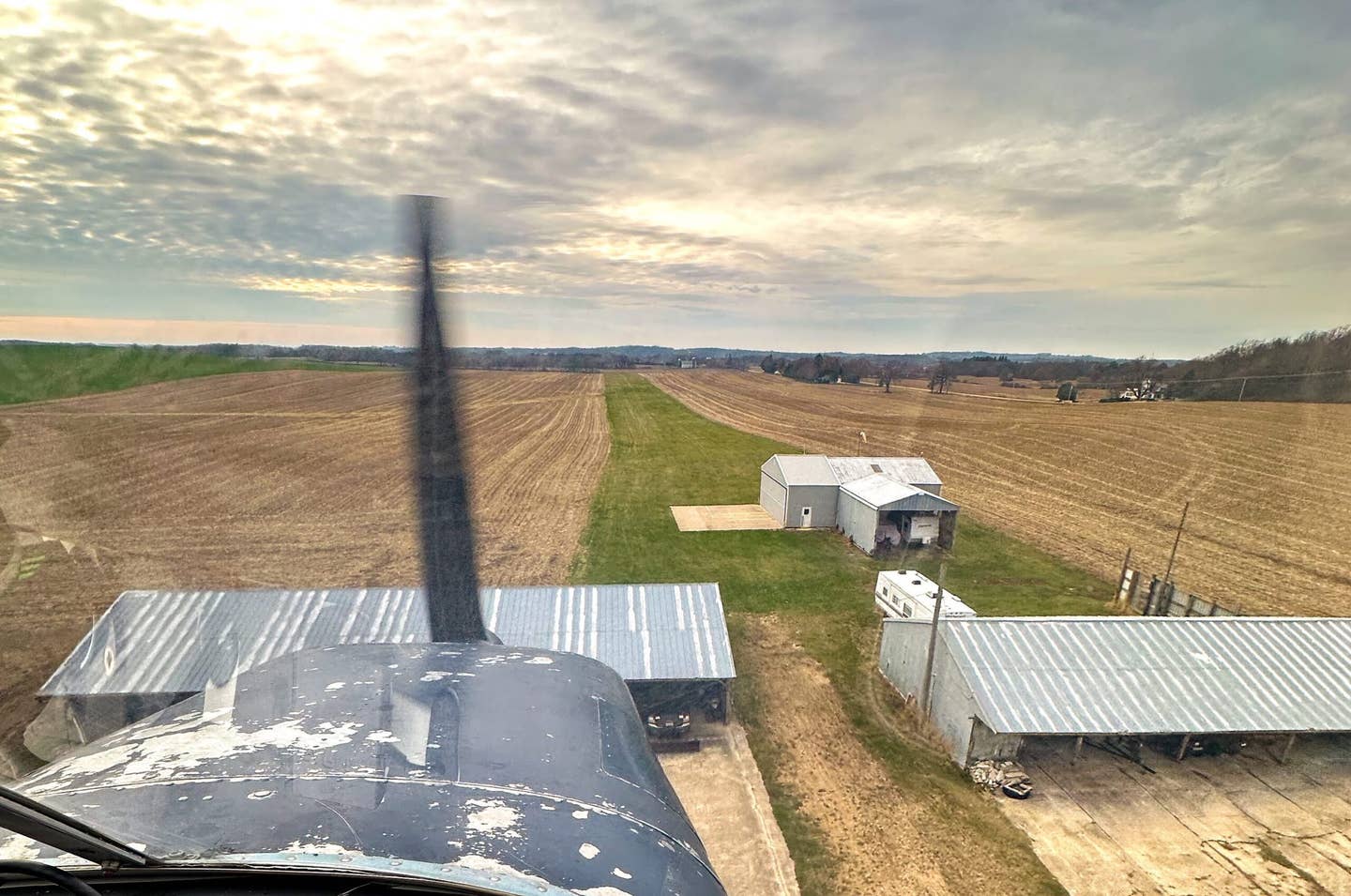How Is an Annual Inspection Like Fatherhood?
As an airplane undergoes its first annual inspection under its new owner’s watch, the resulting expectations and nerves transport this pilot into a mental version of a smoky waiting room of expectant fathers.
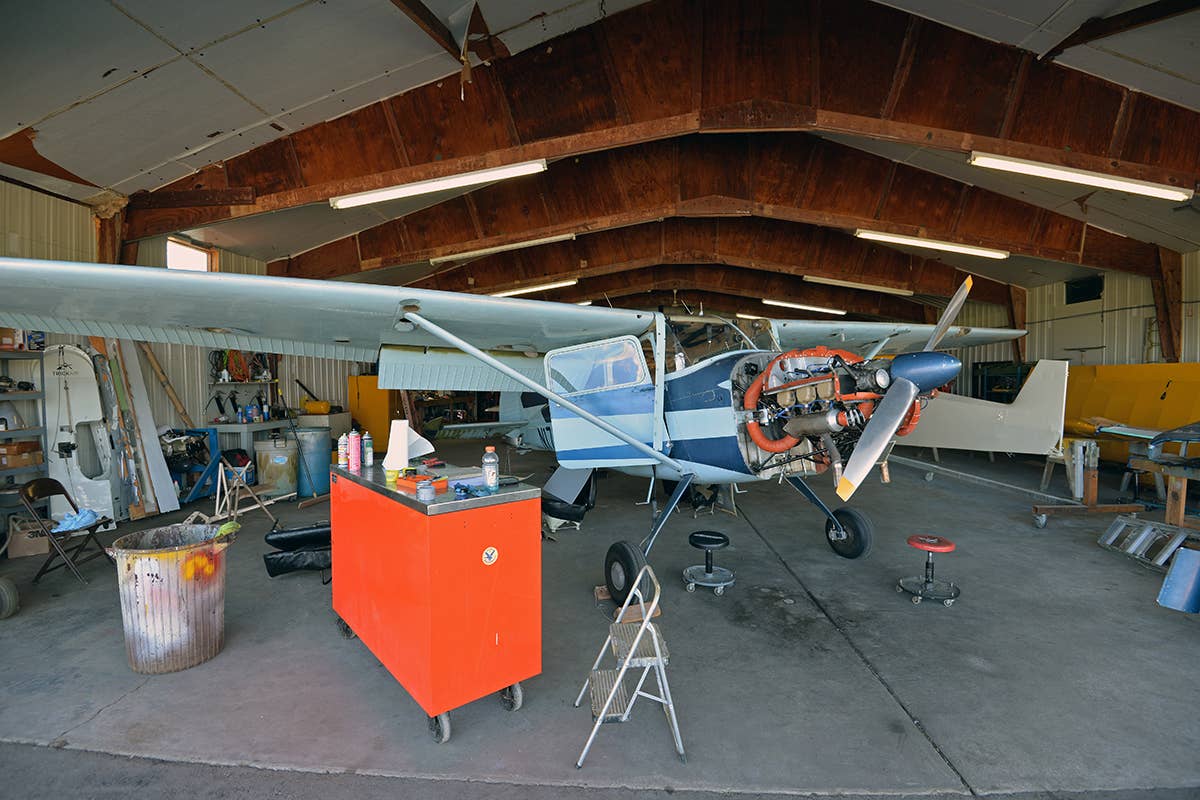
Under the knife in the maintenance hangar for the first annual inspection. [Photo: Jason McDowell]
Based on what I’ve seen from Hollywood, every expectant father prior to about 1970 spent his time pacing back and forth in a hospital waiting room as his wife gave birth to their baby. Accompanied by other men in the same situation, they would chain smoke cigarettes by the carton, leaving the hard work to their wives and smothering their nerves in carcinogens. Tensions were high, and everyone just wanted it all to be over and done with.
Having successfully avoided fatherhood thus far, I cannot relate to the overall experience. But as my airplane undergoes its first annual inspection under my watch, the resulting expectations and nerves have provided my own mental version of that smoky waiting room. Cigarettes are nowhere to be found, but in anticipation of a massive, unexpected repair bill, I’ve certainly consumed an unwise quantity of potato chips.
A few days into the annual, I drove up to my mechanic, Ryan Johnson, to drop off the logbooks and check on his progress. He welcomed me into his hangar with a solid handshake and a friendly smile. The warmth was quickly replaced with an icy chill, however, when he casually said, “I did find one issue with the airplane.”
What’s the Issue?
Fearing the worst, I held my breath and braced for a four or even five-figure repair bill. With no unfiltered Camels handy, I resorted to gnawing on a fingernail. Fortunately, Ryan explained that the issue was just a broken tailwheel bracket—serious if it created a larger failure, but less than $100 to repair.
He found the issue because I opted to proactively replace my existing tailwheel springs, which appeared to be many decades old. I like the idea of replacing critical items before they fail. For a few hundred dollars, a fresh set amounts to cheap insurance.
As it turned out, this project uncovered the broken bracket, which had been entirely hidden by the old spring assembly. Had I not opted for the new springs, it might have gone unnoticed and created issues down the road. I chalked this up as a big win.
Ryan reported that the engine and airframe both appeared to be very straight and in good condition. His impression was that the airplane had been well cared for by the previous owner, which was music to my ears. He expected to wrap up the basic inspection later that afternoon, and said he would get started on my punch list of extra items the following day.
Tackling the Punch List
The list I had created consisted of items that have surfaced individually over the past 25 or so hours of flying. Some very minor, some more serious, but all provide a glimpse into the aging process of a 69-year-old airplane. Here’s an overview:
The most visually obvious work to be done involves the installation of 26-inch low-pressure tundra tires. This modification isn’t a necessary one—it’s mostly for fun. I’ve flown a friend’s 170 fitted with such tires, and the pillowy ride over rough terrain is just sublime.
There are some legitimate benefits to good tundra tires. They increase prop clearance and reduce the likelihood of a prop strike. And in the event of a forced, off-airport landing, they greatly increase your chances of a successful landing on otherwise inhospitable terrain. But mostly, they’re massive fun and they look cool.
Installing such large tires necessitates the installation of more powerful brakes. While I generally try to avoid braking very hard or even at all, the increased diameter of the big tires would make my existing, single-piston Cleveland brakes woefully inadequate. Therefore, to maintain good braking performance, I upgraded to a new set of wheels and double-piston brakes and brought them along for Ryan to install.
Also in the name of safety, I’m having him install a full set of LED lighting. As part of a sponsorship unrelated to this column, I’m having every exterior light upgraded to lights that are brighter, more reliable, lighter, and cooler to the touch. It will be a complete setup of landing/taxi lights, strobes, and position lights. When they’re all installed, I will be far more visible to other traffic.
I’m particularly sensitive to lights that create large amounts of heat and electrical draw. Years ago, while training in a Cessna 172R in Michigan, I detected smoke in the cabin and traced it to a malfunctioning toggle switch. When I switched it off, the metal toggle actually burned my finger.
Electrical equipment this hot naturally makes me nervous, especially when it’s located mere inches from a main fuel line. I have, therefore, been motivated to eliminate these concerns before they become larger problems or inflight emergencies. If the risks can be eliminated with the relatively simple installation of LED lighting, all the better.
Back in the 170, a similar concern came up with a small bullet light mounted up high on the A-pillar, just ahead of the left door. Fitted with a powerful white bulb, the blinding light serves little purpose…and it becomes far too hot to touch and would not turn off. Accordingly, I asked Ryan to either fix the switch or remove the light altogether.
Since he’d already be working on electrical stuff in the cabin, I also asked him to install a Garmin USB power outlet on the panel. This will enable me to power my phone and iPad so that I may be guided to my destinations via EFB magic. I’ll still carry a paper chart as a backup, but it sure will be nice to not have to run my devices on battery power alone.
A Few Minor Items
Some of the more minor items involve the replacement of aging fuel sumps. Both the left wing and engine sumps weep a little fuel if they’re not reset just so, and I’m having each replaced. The resulting safety and peace of mind will be good returns on such a relatively small investment.
For the remaining items on my punch list, I turned to the International Cessna 170 Association. A particularly active and vibrant owner’s group, the association is a treasure trove of wisdom and lore; Google a technical question about the Cessna 170, and chances are, the top hits will be discussions from the member forum.
One such discussion focused on one-time modifications that experienced owners recommend making on any 170, and I compiled a list based on these recommendations. I asked Ryan to closely inspect the wing attach blocks inside the wing spar carry-through for corrosion. And I asked him to closely inspect the rudder cables where they pass through some rear bulkheads in the tailcone, completely hidden from view.
I also asked him to completely disconnect and remove the parking brake from the airplane. Apparently, the 170’s parking brake mechanism has been known to activate when the pilot operates in strong crosswinds. At the end of their travel, the rudder pedals can inadvertently set the parking brake, and this has caused ground loops on landing. Removing it is another example of cheap insurance.
The Type Club Pays Off
This sort of knowledge underscores the importance of joining your type’s owner group, if it has one. For a relatively nominal fee, you can access massive amounts of information and learn from the lessons of others. If your aircraft type lacks an official owner’s group, you can often find an informal one in the form of a Facebook group. Whatever the form, participation pays off.
Ryan took all of these requests in stride, never making me feel like the whiny, needy, first-time airplane owner that I know I am. He stuck around to answer all of my questions and chat, and was a genuine pleasure to work with and learn from. He will be receiving a case of his favorite beer when I pick my airplane up.
I left feeling better about the whole deal. Sure, more issues might be uncovered and accordingly, some nerves still remain. But equipped with a good understanding of the process and confident that my airplane is in good hands, I’m left with little desire to become a cigarette smoker and nervously pace back and forth in anticipation of massive mechanical problems. I’ve even resisted the urge to crack open a fresh bag of BBQ chips.

Sign-up for newsletters & special offers!
Get the latest FLYING stories & special offers delivered directly to your inbox

